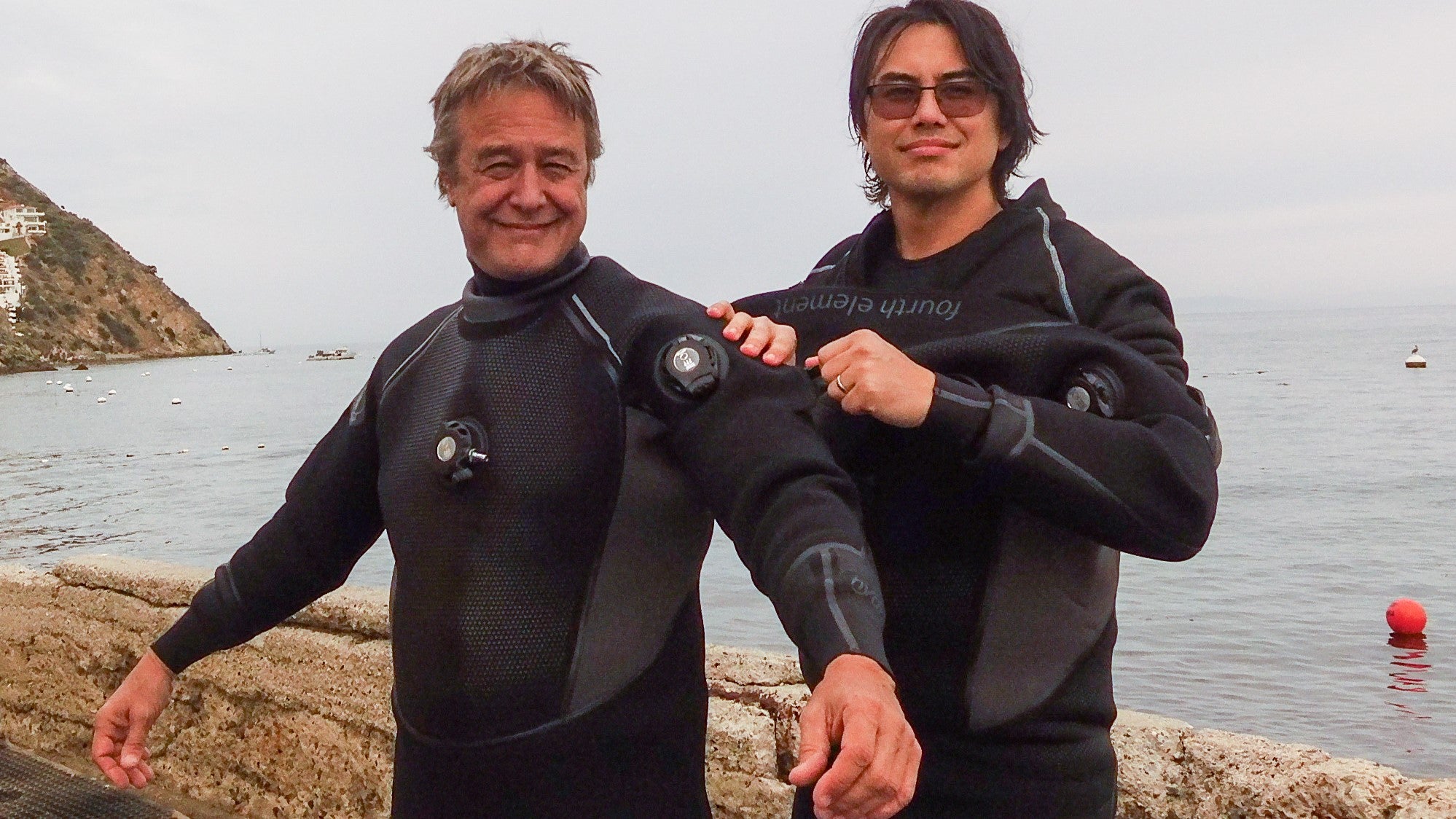
Diving is an incredible experience, but for some, the colder water can be a major deterrent. If you find yourself shivering on multiple dives per day, you may want to consider trying drysuit diving. It may change your entire perspective on diving.
Drysuit diving is a type of diving that uses a special suit that keeps you dry and warm, even in colder water. It's a great option for those who get cold easily and want to extend their diving season. But if you're new to drysuit diving, you may have some questions.
Will I be warm enough?
Yes, but it depends on your own personal tolerance. Drysuit diving is designed to keep you warmer and dryer in colder water. The suit is made of a waterproof material that keeps the water out (unlike a semi dry wetsuit), and it's also insulated by different thicknesses of undergarments to retain your body heat. You will also vary the thermal underwear based upon your needs and a hood to keep you even warmer. Dry gloves are also an option as well as heaters that can be added.
What does it take to learn?
To learn drysuit diving, you will need to take a special course. You will learn how to properly use and care for your drysuit, as well as how to handle different buoyancy and trim issues that may arise while diving in a drysuit. The course will also cover safety procedures and emergency protocols.
Is it hard to learn?
Drysuit diving does require some extra training and practice, but it's not necessarily difficult to learn. The key is to take your time and practice in a controlled environment, such as a pool or confined water area, before taking on more challenging dives.
One of the hardest things to learn about drysuit diving is proper buoyancy control and trim. Because a drysuit is much more buoyant than a wetsuit, divers must learn how to adjust their buoyancy to compensate for this added buoyancy. This can take some practice and getting used to, especially for divers who are used to diving in a wetsuit. Additionally, the diver needs to learn how to adjust the trim of the suit, which refers to the position of the diver in the water, to maintain an efficient and comfortable diving position. This can also take some practice and getting used to. Overall, mastering buoyancy control and trim is a key aspect of drysuit diving, and it requires patience and practice to master. If you feel like a new diver again, that is not unusual but with practice on multiple dives, you can learn to master it.
Is it expensive to learn?
The cost of learning drysuit diving will depend on where you take your course and what type of drysuit you purchase. However, it's important to consider that drysuit diving can extend your diving season and the amount of additional time you spend underwater on each dive, which may save you money in the long run. Drysuits with proper care can last very long periods of time when compared to a wetsuit.
Can I rent* everything I need?
Yes, you can rent a drysuit for a course or for a dive, but if you plan to do a lot of drysuit diving, it's best to invest in your own. Drysuits are expensive but last for a long time if you take care of them. They are also much more forgiving if you gain or lose weight over the years in terms of sizing since they have extra space in them for different thicknesses of undergarments.
*Malibu Divers has drysuits for rental.
Am I an experienced enough diver to learn?
You do not need to be an experienced diver to learn drysuit diving. Divers in colder climates often learn to dive for the first time in a drysuit. However, if you are already certified you will need to have at least an open water certification, which means you have completed a basic diving course and know the basics of diving.
I’ve heard about accidents with drysuit diving - is it more risky?
Drysuit diving is not necessarily more risky than other types of diving, but it does require additional training and practice. Very serious dive accidents have happened when someone buys a drysuit and then tries to learn on their own without any training or supervision. If you get proper training and follow safety procedures and protocols, and dive within your own limits, drysuit diving can be a relatively “safe” and enjoyable experience.
Where do I go to learn?
You can find drysuit diving courses at most dive centers, or check with your local dive shop. Look for a reputable instructor who is very experienced and certified to teach drysuit diving.
I also have heard there is no such thing as being totally dry? What is real and what do I need to know?
That is not really true but it does depends. Sometimes very small amounts of water may enter the suit through the wrists, neck and ankles depending on the type of suit and your own physical attributes. If you twist your wrist for example, you may create a small channel where water may enter. But that is why you'll wear special seals and gloves to keep the water out. There are also a few extra tricks your instructor can share with you to solve this issue. So it's also true that you may be completely dry while diving in a drysuit. If you damage or don’t maintain your drysuit zipper for example, you may deal with patching leaks and always be wet or damp. Fix it or it’s time to retire an old tired drysuit that is past its lifecycle. A drysuit will keep you warmer and dryer overall, and it's certainly much drier than diving in a wetsuit.
Overall, drysuit diving is a great option for those who get cold easily and want to extend their diving season. With the right training and practice, you can enjoy the benefits of drysuit diving while staying safe and comfortable underwater.
Want to stop being cold or sitting out diving during the winter? We can help: contact us



Share:
Discovering the Thrills and Benefits of Freediving: A Beginner's Guide - Is Freediving Dangerous?
Rescue Diver: What to Do When Your Victim Has a Pacemaker